|
4.0 Objectives
In this lab you will learn to:
- Georeference an image;
- Create a geodatabase, associated domains and
feature classes to store digitized features of a geologic
map;
- Use the "Feature to Line" and
"Append" tools to add lines to a feature class;
- Digitize in heads-up mode, construct a topology, and edit features.
4.1 The Problem
Three of our next four labs focus on the geography and geology of
the Mason Mountain Wildlife Management Area,
our weekend field trip site for collecting field observations. The
Mason Mountain Wildlife Management Area (hereafter WMA or MMWMA),
administered by the Texas Parks and Wildlife Department, is a
state-owned, ~5300 acre former ranch principally dedicated to studying
animal husbandry of "super exotic" African ungulates (Oryx, Kudu,
Water Buck, etc.) in a Texas Hill Country habitat. Research into the
ecology of the "central Texas Mineral Region" (a.k.a. Llano Uplift) and
applications to wildlife management practices are also conducted there.
Access is restricted; entry is by permission only. Geologically,
the WMA is situated near the boundary of the western Llano uplift
(Figure 1), where erosion of Cretaceous carbonates (green in Fig. 1) of
the Edwards Plateau has exposed older Paleozoic and Precambrian rocks
(blue and pinks in Fig. 1) of the Llano Uplift beneath. The wide
variety of rocks exposed here and extensive outcrops of the Precambrian
granite of the Katemcy Pluton (Fig. 2) make this a nice location for
studying the geologic history of the uplift and the products and
processes associated with magmatic intrusions.
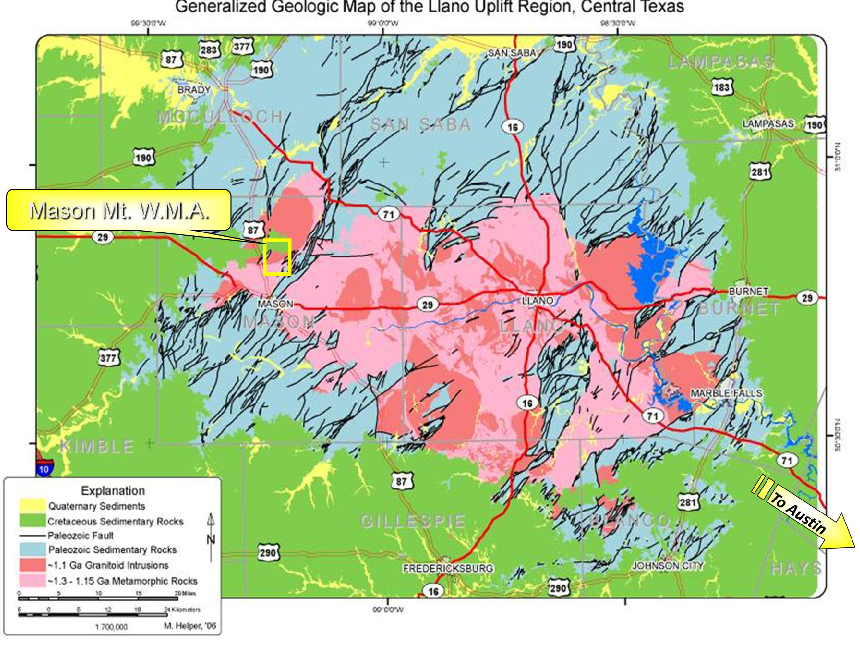
Figure 1. Generalized geologic map of the Llano Uplift region, showing
the location of the Mason Mountain Wildlife Management Area in Mason
County.
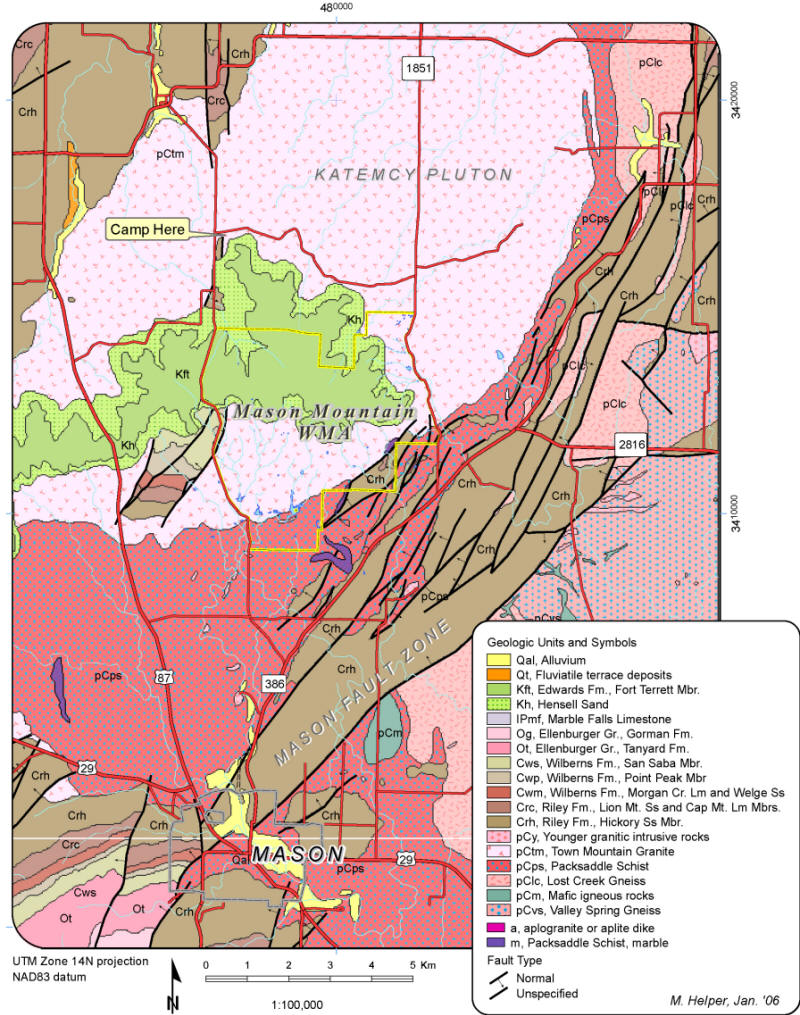
Figure 2. Generalized geologic map (data from Geologic Atlas of
Texas, Llano Sheet) of the Mason, TX area, including the WMA. We
will not be camping in the location shown on this map.
Our first task, to be completed in this and the following lab (Labs 4
and 5), is to create a vector geologic map of the WMA using a few
provided shapefiles and lines that you will digitize from an image of an unpublished UT senior thesis map. Once
completed, this vector map can be used as a base layer for collecting
and editing geologic during our field trip. The geologic map is most useful when
displayed with other base map layers (roads, contours, creeks, lakes, etc.)
that give it context. Base map feature classes, to be organized
and symbolized, are also provided for this purpose. In Lab 7 we
will generate a highly detailed shaded elevation layer from
airborne LiDAR elevation measurements that can also be displayed with these vector base
map layers.
4.2 Data
Data (and metadata) for this lab are found in the
Lab_4_and_5_data folder in
the network class folder. They include:
- A jpeg image of an unpublished 1:7500 scale geologic map
of the Mason Mountain Wildlife Management Area.
The image does not have an accompanying world file.
You will create one by georeferencing.
- Infrastructure shapefiles:
- WMA Roads_2017 - gravel and 4-wheel
drive roads within the WMA
- Buildings2017
- WMA building polygons
- Fences_2017 -
Polyline file of fences within the WMA
-
Gates - Point file of fence gates
- Property_footprint - Property boundary
polygon
- Hydrography and elevation shapefiles:
- Lakes_2019 - Polygon file of lakes,
ponds and tanks
- Creeks_2019 - Polylines
of ephemeral creeks and drainages
- Contours_20ft - Twenty-foot elevation
contours derived from 2007 LiDAR LAS files (more
on these in Lab 7)
- Geology Shapefiles (within "Geology_base_layers" folder):
- K_unconformity_2017 -
Polyline of the Cretaceous/Precambrian
nonconformity
within the WMA
- Granite_outcrops_2017_updated_all_data - Outcrop exposures of
granite (polygons)
- All_pts_post_2017_trip -
Measured orientations of joints, dikes and
veins within granite (points). Also includes
points of interest.
- DK_measurements -
Strike and dip of bedding in sandstone or
foliation in marble (points)
-
All_pCtm_line_features_post_2017 -
linear features in granite, i.e. faults,
dikes long enough to map, contacts between
granite bodies of different textures.
To complete this lab and Lab 5 you will do the following (in order):
-
Georeference and rectify the geologic map
image
-
Create a Personal Geodatabase
-
Import the WMA shapefiles into the Geodatabase
-
Create a
Geology Feature Dataset with a spatial domain that
encompasses the area of interest and import the Geology shapefiles
-
Create
an empty line feature class within the Feature Dataset with the following fields and domain values:
-
a) Exposure (exposed, inferred, covered)
b) Type (fault, contact)
c) Downside (down-thrown side of fault - N, NE, E, etc.)
-
Creates
domains for each field and attach the domains to the
feature class -
Create a line map boundary from the map area polygon using
the Feature to Line tool; Append this feature to the line
feature class
-
Append the provided digitized unconformity to the
line
feature class
-
Digitize geologic unit contacts
and faults -
Create a contact and fault line topology
(END OF LAB 4) -
Clean the line feature class of topological errors
(BEGINNING OF LAB 5) -
Create attribute
and symbolize geology polygons
-
Add and symbolize base layer feature
classes (roads, contours, streams, lakes, etc.) -
Add and symbolize geology feature classes (outcrop
polygons and strike/dip layers) -
Label geology polygons, faults and point features
-
Layout and print a map -
Answer and turn in any questions and your layout.
4.3 Procedure
4.31 Georeferencing
-
Copy the Lab_4_and_5_data folder to your network storage.
-
Within your Lab_4_and_5_data folder, create a new folder called
My_Data.
-
Open ArcMap with a new, empty document.
-
Add the "property_footprint"
shapefile to the map.
The spatial reference for this file is UTM14N,
NAD83.
-
Add the geologic map image,
"WMA_geomap_2017.jpg". As indicated by a warning
window, this image does not have a spatial reference; the
spatial reference is said to be "undefined".
-
Georeference the geologic map image to the "property_footprint"
shapefile, which shows precisely the same WMA boundary as
that contained within the image. Figure 1 below shows suggested link points for georeferencing.
Consult the lecture notes and the
Georeferencing
Software Tip for details. For further details on
georeferencing, see pp. 317-322 in the digital book "Using
ArcMap" in the class folder (\Digital_Books\ArcMap\Using_ArcMap.pdf).
Also Search ArcGIS Help for "Georeferencing a raster dataset" and "Fundamentals for georeferencing a raster
dataset".
Watch a
short video
of part of the georeferencing process (with a different
geologic map).
-
Save your georeferencing links from the Links table in your
Lab_4_and_5_data/My_Data folder.
-
Rectify the georefenced map, using nearest neighbor
resampling, and a cell size of 1 meter, Tif format and jpg
compression of 90. Before
rectifying, be sure the file will be saved in your
My_Data
folder for this lab.
-
Because the spatial reference of the Data
Frame is UTM14N NAD83, the rectified map should also be in
this coordinate system. Check the spatial reference of
the rectified map file before proceeding. Do
this in Arc Catalog (within ArcMap) by right-clicking on the new file and
examining the file's Properties. Forget how?
Consult
section 2.461 in Lab 2.
-
Add the newly georeferenced map to ArcMap and
remove the original image. Save the ArcMap project to
your My_data folder.
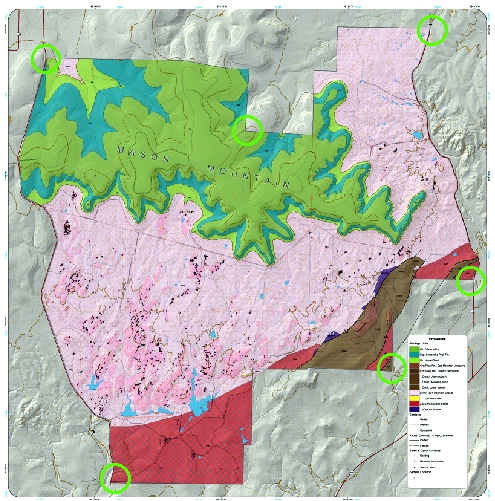
Figure 1. Unreferenced geologic map image with suggested
points for georeferencing shown by the bright green circles
4.32
Creating a
File Geodatabase and Importing
Data Files
-
Within ArcCatalog, browse to your My_Data folder,
right-click on the folder, select "New", then
"File Geodatabase".
-
Name the new Geodatabase "WMA_Map_XXX.mdb"
where XXX are your initials.
-
Right-click on the WMA_Map_XXX.mdb icon, select
"Import", then "Feature class
(multiple)...".
-
Before importing any data, we'll first set some
"Environment" variables. This will save
some browsing/typing later. Click the "Environments..."
button at the bottom of the window, select "Workspace", click the folder button next to
"Current Workspace", browse to your
Lab_4_and_5_data
folder and click "Add". This is the only
Environmental variable we'll change, so click OK.
-
Time to Import some files... Using the folder icon
next to the "Input Features" line, browse to
your Lab_4_and_5_data folder, hold down the Shift key, and click
on the shapefiles you wish to import, i.e. all of the shapefiles
within your Lab_4_and_5_data folder, excluding those within the
"Geology_base_layers" folder.
Click OK and wait for the files to be imported.
-
Examine the WMA_Map_XXX geodatabase in
ArcCatalog. If the above steps were completed
correctly you will see 9 feature classes within the geodatabase,
as shown below (but the Lakes and Creeks feature classes are
now "2019").
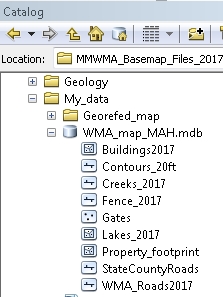
Figure 2. ArcCatalog view of successfully imported feature
classes within the WMA_map Geodatabase.
4.33 Creating a Feature Dataset
and Importing Geology Feature Classes
We will need a Feature Dataset (see the lecture notes from
week 3) within the geodatabase to
hold files we will create by digitizing.
Why? Without a Feature Dataset, the files we will
create could not share a topology. This is a general
rules... all files that share a topology must be contained
within the same Feature Dataset. For this reason, all
files within a Feature Dataset must have the same spatial
reference and "spatial domain" (more on this below).
-
Right-click on your WMA_Map_XXX geodatabase, select
"New", then "Feature Dataset".
-
Name the new Feature Dataset "Geology" and
click the "Next" button to bring up the now
familiar Spatial Reference Properties window.
-
Browse to Projected Coordinate System>UTM>NAD83>NAD83 UTM
Zone 14N.prj and select (make sure the right Projected
Coordinate System is in "Name"), then click "Next".
-
In the next window you are given the chance to specify a
vertical datum. The default is none, which means that
if you have elevation information (e.g. features classes of
the type "PointZ",
"PolylineZ") that were collected with a particular elevation
datum (e.g. often NAVD88 for data collected by most GPS
units) the software will not provide a means for converting
the data to a different vertical datum. If you knew
the vertical datum for the data sets you were incorporating
this would be the opportunity to specify it. For the
purpose of this lab the default of "none" is acceptable.
-
The final window sets the "XY tolerance" (minimum distance
between between nodes or vertices before they are considered coincident).
See "About XY Tolerance" in ArcGIS Help. Accept the defaults and click "Finish".
-
As above (step 5 in 4.32), Import
shapefiles, this time from the Geology_base_layers
folder (5 in all),
into the new Geology feature dataset.
-
As these (or any other) new feature classes are imported (or
newly created) in a Feature Dataset they may be (?)
automatically added to the ArcMap Table of Contents (T.O.C.).
Remove these so that all that remains in the T.O.C. are the
georeferenced geologic map and property_footprint files.
4.34 Creating
New Feature Classes within the Feature
Dataset
We now need to create empty feature classes within the
Feature Dataset to hold any lines, points and polygons that we will
digitize from the georeferenced geologic map, as well as their attributes.
One strategy for doing so is given below. It is not the only way this could
be done, but is relatively simple and straightforward for this fairly
simple map. A more complicated map with more features
might require a different scheme with additional feature
classes and domains.
Once the feature classes are created, we will "edit" them
to store the map features we create by digitizing. Read about the general
process and strategies behind editing by searching ArcGIS
Help for "What is Editing?"
-
In ArcCatalog, right-click on the Geology Feature Dataset, select
"New", then "Feature Class..."
-
We need a feature classes for
geologic lines, i.e. faults and other rock unit contacts.
Name this feature class "GeoLines_XXX" (XXX is again
your initials) with an Alias of "Contacts and Faults".
We could separate these into two different line
feature classes but for now faults and contacts will be
stored in a single feature class.
Change the feature "Type" to "Line Feature". The "Geometry Properties" options here should be left
unchecked, as shown below (left).
-
Click the Field Name "SHAPE" to see
the "Field Properties" for the Shape field, (below
right).
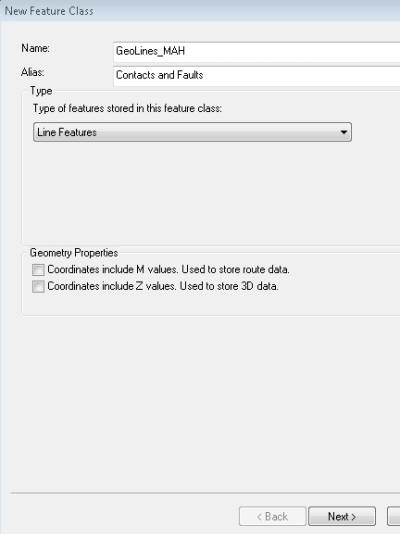
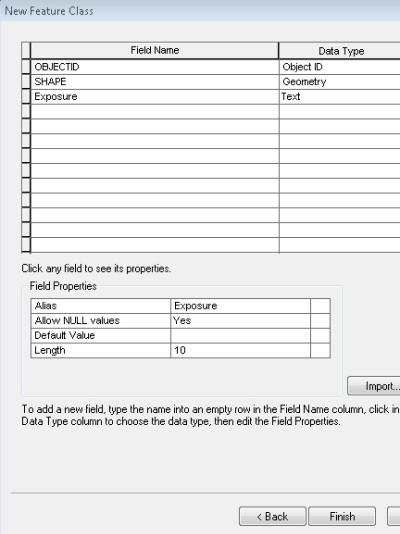
Figure 3. Creating a new line feature class for contacts and
faults.
-
The "Field Properties" for the "SHAPE" field
of the attribute table for this new Feature Class (which
you've named (GeoLines_XXX) are listed in rows (see
above right). The SHAPE field will
store the "Geometry Type" (in this case lines), coordinates, spatial
reference, and other variables of this feature class. For
more on SHAPE field property variables see pages 45-48 in
the digital book "Building a Geodatabase" or the Help
files.
-
We will now add a few new fields to the attribute
table. Enter the field name "Exposure"
in the blank row below the SHAPE field
name. For future reference, Field Names can not
exceed 13 characters and can't include any special
characters, including spaces. An "Alias"
can be specified for longer names and/or coded field
names. The Data Type for this new field is
"text" (see above right) and the Field Properties list should be
modified as follows:
-
Repeat this process for two new text fields:
-
Field Name: "Line_Type";
Data Type: text, Length: 10 (will eventually
have values of "fault" or "contact") -
Field Name: "Downside"; Data
Type: text, Length:3 (this will have values of N, NE, E, SE, S, SW, W,
NW, or N to indicate the down-thrown side of the fault)
-
Click Finish. You have now created a
feature class that will store geological lines - contacts
and faults - with attributes to indicate which one of the
two a line represents and whether the feature is exposed,
inferred or covered, which will enventually be symbolized by
solid, dashed or dotted lines.
Geologic maps, like the one we are digitizing, contain
many other features besides contacts and faults. For
example, point
features that record orientations of layering and linear
features (e.g. dikes) and polygons that represent rock units are nearly
always present. We will have the software
create rock units from the lines that we digitize and, in
this instance, you will not digitize the point features.
In a later lab, we will create a features class(es) for
point data (strike & dip or trend plunge of joints,
lineations, etc.) that we will collect in the field but for now these are provided.
4.35
Adding Domains to the Geodatabase
To avoid entry errors or repeatedly typing the same values
when "populating" the attribute table of the GeoLine_XXX feature class we just created, we will now define lists of
all possible attribute values for the fields we
created, as well as those for a rock unit feature class that
the software will create. Such lists are called
"Domains". Domains are created for the entire geodatabase, not
just for a specific feature class or feature
dataset, allowing the same domains to be used by any feature
class within the geodatabase. Once created and attached
to the feature classes, domain values can be selected during
editing from
drop-down menus in the attribute tables, a very
fast and efficient way to enter data.
-
In ArcCatalog, right-click the
WMA_map_XXX geodatabase icon, select
"Properties..." and click the
"Domains" tab.
-
The domains you will create have the following
names, properties and values:
| Table 1.
Coded Value Domain Codes, Field Types and Descriptions |
Domain
Name/Description |
Field Type |
Domain Type |
Codes/Descriptions |
| Down_side |
Text |
Coded Values |
N, NE, E, SE,
S, SW, W, NW |
| Exposure |
Text |
Coded Values |
Exposed,
Inferred, Covered |
| Line_type |
Text |
Coded Values |
Fault, Contact,
Dike, Outcrop, Q_vein, Other |
|
Unit_Abbrev |
Text |
Coded Values |
Ku, Crc, Crh, Crhu, Crhm, Crhl, pCtm, pCps,
q, pCpsm, pCpeg, Other |
| Unit_Name |
Text |
Coded Values |
Code:
Cretaceous-undifferentiated; Riley_Fm_Cap_Mt_Lm;
Riley_Fm_Hickory_Ss; Riley_Fm_Hickory_Ssu;
Riley_Fm_Hickory_Ssm; Riley_Fm_Hickory_Ssl;
TownMt_granite; Packsaddle_Schist; Quartz_vein; marble |
| |
|
|
Description:
Cretaceous-undifferentiated; Cambrian Riley Formation
Cap Mt;
Cambrian Riley Formation Hickory Sandstone; Hickory
Sandstone upper; Hickory Sandstone middle; Hickory
Sandstone lower; Town Mountain Granite; Packsaddle
Schist; quartz vein; marble |
All of these domains will be applied to text fields, and all will be
"Coded Value" domains, storing values as codes.
The codes are a way to speed up searching and sorting of the
final tables and have the advantage of providing drop-down
menus for data entry. But using a code (the actual
value being encoded) different than
the "Description" produces problems when exporting
the data to other applications (Excel, etc.). I therefore
recommend that where practical the values entered for the Code and the
Description be identical or nearly so, even though this would seemingly
defeat the main purpose of using codes (note that the codes
and descriptions given above for Unit_Name domain violate
this). It's won't
affect searching or sorting for the small tables that we'll
create in this instance, and we won't be
exporting data in any event. Just a word to the wise for
later work. It should also be noted that domain codes
are case sensitive - be consistent and either capitalize (as
above) or don't capitalize the first letter of all of your
coded values. So that we can all share data
after it has been collected in the field, please use
precisely the codes given above, paying attention to
capitalization of all codes.
-
As shown below in Figure 4, enter each of the above Domain names into a row below
the "Domain Name" heading. Leave the adjacent
"Description " column blank or type in a description of
what the domain name means.
-
Change the first two rows of the "Domain
Properties" for each domain to "Text" and
"Coded Values", respectively.
-
In the "Coded Values" area, enter the Coded
Values for each domain from the Table 1 above, using the
exact same code and description for each value, except for
Unit_name, where the two are different. An
example for the "Unit-name" Domain is shown below. The
"Unit_name" and "Unit_Abbrev" domains will be used for rock
unit polygons that we will later (Lab 5) make with ArcToolbox from the lines we digitize.
Note in the example below that the Coded Values have underscores
and/or dashes, not spaces. "Codes" can not contain
special characters or spaces, but "Descriptions" can.
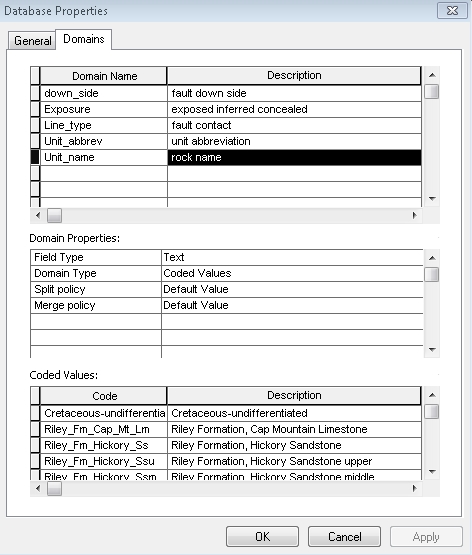
Figure 4. The database Properties/Domains window, showing
domain names and descriptions, with field type, domain type
and coded values/descriptions for the Unit_name domain.
-
Click OK. Other domains and coded
values can be added later, if need be.
4.36
Attaching Domains to Feature Classes
The feature class fields we created earlier do not yet have
their associated domains. It would seem more logical to create
the domains before creating the feature class so that the
domains could be assigned at the same time that the feature classes
were created. This is indeed the recommended
procedure... if you have a well thought-out, preconceived database
schema!
I usually do it the way I'm describing
here...
-
In ArcCatalog, right-click on the GeoLines_XXX feature class in the geodatabase, select "Properties..." and click
the "Fields" tab.
-
Click on the Field Name "Exposure".
-
In the "Field Properties" area, click the blank cell to
the right of the word "Domain" to reveal a
drop-down menu; select the "Exposure" domain.
-
In the blank area to the right of "Default
Value", type "Exposed" (note that these values are
case-sensitive and must match the case of the values in your
domains). Solid lines are by far
the most common type of lines on the geologic map, thus
"Exposed" is a good default value for the
Exposure field.
-
Notice that the software has automatically added a new
field to this feature class: "SHAPE_length",
which will be populated by the software as we draw lines.
-
Repeat steps 2-5, for "Line_type" and
"Downside" using the appropriate domains from
the domain values you earlier entered.
Congratulations, you've now completed the
geodatabase needed for digitizing and creating the map for
this lab!
4.37 Digitizing Features
Some general strategies for digitizing, otherwise known as
"Editing":
- Digitize a map boundary line first (think of this as a
"contact" with the rest of the world).
Alternatively, it can quickly be created from a bounding
polygon automatically, as we will do below, using the
"Feature to Line" tool in the Toolbox.
-
Set Snapping before starting and check and/or reset
Snapping as new feature classes are digitized (more about
Snapping below).
Snapping is ABSOLUTELY ESSENTIAL for results that won't require a lot of further editing.
- Try hard to assure that all line features that intersect
other lines are snapped to those lines or
polygons. Lines can not cross; a vertex must exist
at every line intersection.
- Work from one edge of the map to the other; examine the
map carefully and try to think a few steps ahead.
- Enter attributes as you go. Keep the feature class' attribute
entry window, accessible on the
editing toolbar, open as you work and fill in the fields
after completing each feature.
- SAVE YOUR EDITS OFTEN. SAVING EDITS IS DONE FROM
THE EDITING TOOLBAR, NOT FROM THE ARCMAP FILE MENU.
The editing process can crash the software more easily than
almost any other ArcMap process.
A. Background Info for Digitizing
- General Work Flow For An Editing Session
-
Open ArcMap, add a rectified geologic map image and any
other layers useful for digitizing.
-
Check the Coordinate System of the Data
Frame. Set it to match that of the feature classes you
will edit.
-
If not already open, open the Editor toolbar
(Customize>Toolbars).
-
The generalized digitizing/editing procedure
(for future reference) is:
-
From the Editor toolbar menu (or from a
right-click on the layer of interest in the Table of
Contents), Start
Editing. If the Data Frame coordinate system is different
from that of the editable feature classes in your Table of
Contents, you will see a warning window similar to this:
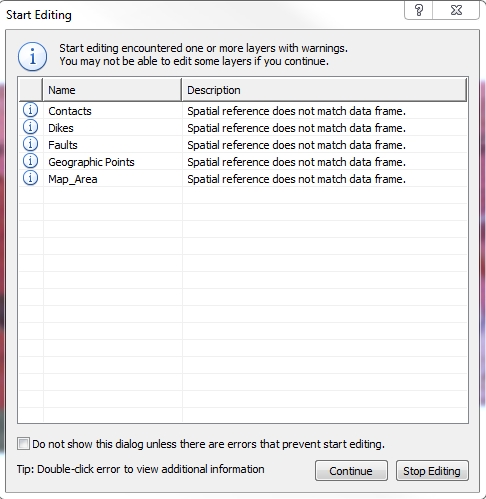
Figure 5. Editing warning that the spatial reference of the
listed feature classes does not match the spatial reference
of the data frame. This will not prevent editing in
this instance, but may in others. If the feature class
being edited is not listed then ignore the warning and
proceed. If it is then consider changing the data
frame spatial reference to match the feature class being
edited. Failure to do so may result in data that are
not properly located.
When/if this window appears
and the layer(s) you will edit are listed, "Stop
Editing", go to the Data Frame Properties, and change the
coordinate system to match that of the feature class(es) you
will edit, in this case NAD83 UTM Zone 14N. Although
it may list many layers, the only relevant warnings are for
those you will edit. Ignore any others and hit
"Continue" if the layers you will edit are not listed.
After this warning window, the "Create Features" window
(or Tab) opens, allowing you to select a feature
class to edit and to choose a "Construction Tool" Read about the
"Create Features" window
by searching ArcGIS for "Creating features with feature
templates".
Open the "Snapping Toolbar"
 (under the Editor menu on the Editor
Toolbar)
. So what is this snapping business about? (under the Editor menu on the Editor
Toolbar)
. So what is this snapping business about? See "About Snapping"
in ArcGIS 10
Help. READ THIS NOW - IT IS WELL WORTH THE TIME,
CONSIDERING WHAT FOLLOWS.
Begin tracing or outlining a feature – create a “Sketch”. Click to create a vertex; create vertices as needed to
outline the feature. How many vertices and
to what detail do you need to digitize?
This question is best answered by the source layer map
scale. It is senseless to digitize at a scale
greater than 2X the map scale - the map was likely never
intended to have a degree of accuracy that exceeds the map
scale, so even 2X is overkill. In our case, the
original map has a scale of 1:7500, so zooming in to more
than 1:3750 to digitize is overkill! Finish the feature outline with a double
click, OR a right-click, then "Finish Sketch" OR press F2.
If you don't "Finish" before Saving, you will lose your
edits.
SAVE EDITS (on editing toolbar menu, NOT the ArcMap
toolbar).
Open the table or the attribute editing
tab for the newly created feature
(table icon on edit toolbar) and enter attributes.
SAVE EDITS.
Repeat for the next feature.
B. "Digitizing"
the Map Boundary
The map boundary, in this case the property
boundary, is a rock unit contact with the rest of the world
so needs to be stored as a line. Rather than carefully
and tediously tracing the property_footprint polygon, it
is easier to create an exact replica of the polygon lines using the Toolbox tool "Feature to
Line",
and then to "Append" the result to your GeoLine_XXX
feature class.
-
Use the "Search" tool in the
ArcMap menu to find
the "Feature to Line" Toolbox tool, open it,
"Show Help" and read the Help information
for this tool.
-
Use the tool to create a line
feature class. Change the Input to
property_footprint and accept all of the defaults EXCEPT the
"Output Location", which should be the
Geology feature dataset in your
WMA_map_XXX geodatabase. Name the
new line "WMA_boundary".
-
Use the "Search" tool again to find
the "Append" (Data Management) tool, open it, "Show Help" and
read the Help information for this tool.
-
Use the tool to append your
new boundary line feature class to your
GeoLines_XXX feature class.
IMPORTANTLY, set the "Schema Type" to "No
Test" (see the tool Help for the reason
why) and accept all other defaults.
-
The GeoLine_XXX
feature class now has a feature stored (to
see it, turn off all of the other layers in
TOC), but it doesn't have any attributes.
These can be added by editing the attribute
table. "Start Editing", open the GeoLines_XXX attribute table, and click on
one of the empty attribute cells. You
should then see a drop-down menu; choose a
proper value from the list, i.e. these are
"exposed" "contacts".
-
Save your edits and stop
editing.
C. Digitizing Other Geolines
What remains are other rock unit contacts and
faults. We will not digitize the individual
Cretaceous rock units shown in blue and greens in the
northern part of the map. To repeat,
we will not digitize the individual
Cretaceous rock units shown in blue and greens in the
northern part of the map, do not waste time doing so. Instead, a single
contact that encompasses all of the Cretaceous rocks has
been provided - the K_unconformity feature class (Yahoo!). This needs to be
"Appended" to the GeoLines_XXX feature class, then attributed,
following the procedure of Steps 3-6 above.
Append and attribute the the
K_uncoformity feature class to the GeoLines_XXX feature
class by repeating Steps 3-6 above. Exposure is
"inferred". -
You have now "digitized" the
unconformity between the green and pink rock units on the
map. Do not trace it again!
-
If not already in Editing mode, select "Start
Editing" from the Editor drop-down menu, or right-click on
the GeoLine_XXX feature class in the Table Of Contents and
select "Edit Features>Start Editing". If not already
open, click on the "Create
Features" tab on the right side of the ArcMap window to open
the "Create Features" window. Click "Contacts and Faults" and choose the "Line" tool,
as shown below.
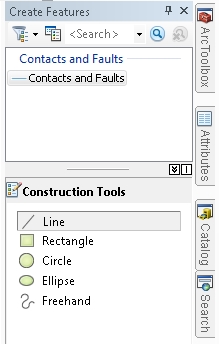
Figure 6. The Create Features window, open to show the
Contacts and Faults feature class and the line tool selected
for editing.
-
From the Editor toolbar drop-down menu select
"Snapping" to open the Snapping toolbar.
We wish to snap, in this case, to the "edge" of the property boundary lines, not their
"vertices" or "ends". Click the
single
icon on the Snapping toolbar that will allow you to do so,
as shown below with the blue-highlighted icon. In
other instances you may want to snap to vertices or ends -
use these options as circumstances dictate.

Figure 7. The Snapping toolbar, with the "snap to edge" tool
selected. The other choices are "snap to end", "snap
to vertex", or "snap to point" feature. More than one
can be active at a time.
Snapping is absolutely
essential when digitizing. Snapping is absolutely
essential when digitizing. Snapping is absolutely
essential when digitizing... It is impossible to
guess when a line you are digitizing is touching
another line unless you snap to it. Gaps between
lines ("undershoots") or "overshoots" can be fixed after a
topology is created, but it is much easier to get it right
the first time! -
Set the map scale to 1:7,000. This is
sufficient detail, keeping in mind that the original map
scale is 1:7500. DO NOT WASTE TIME AT A LARGER SCALE
ADDING MORE VERTICES
THAN ARE WARRANTED OR NECESSARY.
-
Work your way around the map, beginning lines
by snapping to map boundary lines when you can and carefully
tracing lines elsewhere. Double-click to finish, or
right-click and "Finish Sketch", or use the F2 key after
each feature is completed.
-
Remember these rule:
-
Lines should not be
duplicated. They must either start and end
at other lines, or close on themselves to
become "islands", not touching any other
line.
-
Lines must snap to other line edges or vertices
and
can not cross. They can abut one another at a
common vertex and continue on, but they can not cross.
-
Click the Attributes button
 on the Editor toolbar, click a field name (e.g. "Exposure") and
then select the proper domain values from the drop-down menu. An
fault entry in progress is shown below (but note we are not
storing "Fault Type" here, all faults are normal faults).
Use the georeferenced map to established where a contact or fault is
inferred (shown as a dashed line), exposed (solid line) or covered
(dotted Iine). Do not edit the OBJECTID or SHAPE_Length
attributes.
on the Editor toolbar, click a field name (e.g. "Exposure") and
then select the proper domain values from the drop-down menu. An
fault entry in progress is shown below (but note we are not
storing "Fault Type" here, all faults are normal faults).
Use the georeferenced map to established where a contact or fault is
inferred (shown as a dashed line), exposed (solid line) or covered
(dotted Iine). Do not edit the OBJECTID or SHAPE_Length
attributes.
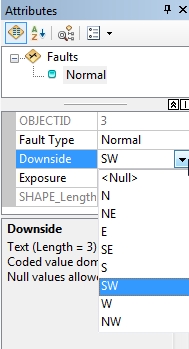
Figure 7. Assigning fault attributes with the
Attribute editor.
Watch a
short video
of digitizing faults (from a different map). Note that the down-side
attribute is incorrect for some of the faults.
-
SAVE EDITS.
-
Use the pan and zoom tools to navigate the
map, digitizing and attributing faults as you go.
Topology dictates that
faults and contacts can not cross one another or each
other (geologic reasoning
dictates this too!). End the
fault or contact you are digitizing and start a new one when the
fault or contact you are digitizing intersects another. The new
contact or fault
should begin by snapping to the start, end or edge of one
that is already
finished. All faults are presumed to be
normal faults, and the down-thrown side will always be
the side with the youngest rock unit. The relative ages of
the rock units can be found in the Explanation of the
map - they are properly listed from youngest to oldest.
-
To delete a line
once it's finished, select it (using the selection tool on
the Editor toolbar), right-click and choose Delete
 . .
-
To delete or add a vertex to a completed
line, select the line with the Edit (arrowhead) tool
 on the Editor toolbar, right-click
on the line and choose "Edit vertices" (or select the
"Edit vertices tool from the Editor toolbar, or even
more simply, double-click on the line with the Edit
tool), right-click on the vertex you wish to delete and select "Delete
Vertex"; to add a vertex, right-click on the line
where you want to add one, then select "Insert
Vertex" . Vertices can be moved by dragging
while in the "Edit vertices" mode.
on the Editor toolbar, right-click
on the line and choose "Edit vertices" (or select the
"Edit vertices tool from the Editor toolbar, or even
more simply, double-click on the line with the Edit
tool), right-click on the vertex you wish to delete and select "Delete
Vertex"; to add a vertex, right-click on the line
where you want to add one, then select "Insert
Vertex" . Vertices can be moved by dragging
while in the "Edit vertices" mode.
Yet another way to do this is with the Edit
Vertices toolbar, which is active and on-screen whenever
you are in the "Edit vertices" mode:
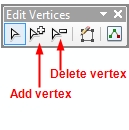
Figure 8. The Edit Vertices toolbar.
-
To split a line into segments, select the
line with the arrowhead tool, find the Split line tool
 on the Editor toolbar and click where you want to split.
on the Editor toolbar and click where you want to split.
-
SAVE EDITS frequently. Once they're
saved, the program can crash and you won't loose any work.
For more on how to create and modify line
features, see "Editing vertices and segments" in the
ArcGIS Help.
-
A final word about
editing... selecting features for editing can be difficult
if more than one layer is selectable - you can
accidentally select a layer that is underneath the one
you're trying to select. To avoid this problem, the
"selectability" of layers can be turned on or off.
The easiest way to do this is by changing the TOC view to
show layer selectability, as discussed in the
last lab. Likewise, when you try to select a layer
and can't, check the Selection TOC view to see if the
layer is turned
off for selection.
Watch a
short video
of digitizing faults and adding/deleting vertices (from a
different map). Note that
the down-side attribute is incorrect for
the first fault digitized.
Watch a
short video
of digitizing contacts (from a different map).
Your completed GeoLines_XXX
feature class should look the image below.

Figure 9. Completed lines of the GeoLinesXXX feature class.
Faults are in red, contacts in black, either solid or
dashed.
4.38
Create a Topology for the Map
Lines
Before automatically creating rock unit polygons from the
GeoLines_XXX feature class, the
lines must be "cleaned" of errors that will corrupt
polygon creation -polygons will not be created if there are
gaps between bounding lines, and extra
polygons can be created when lines overlap. This is reliably done by
creating a topology layer in the Geology feature dataset that
contains rules designed to spot errors. After setting up
the rules and creating the topology, the topology can be
"validated", and explicit violations of the rules
will be flagged for editing.
-
If you haven't already
done so, Save your edits and
stop editing.
-
From the ArcCatalog window within ArcMap (or from
the ArcCatalog program), right-click on the Geology feature
dataset in your WMA_map_XXX geodatabase, select "New", then
"Topology". The Topology wizard opens.
-
Click "Next", accept the name the new
topology ("Geology_Topology"), and change the cluster
tolerance to 0.1 (0.1 meter; see the description of cluster
tolerance in the Help files).
-
Click "Next" and place a check in
the boxes adjacent to the
"GeoLines_XXX" feature class
- this is the only feature
classes we are checking for dangling and/or overlapping lines.
-
Click "Next" and change the
"Number of Ranks" to 1.
-
Click "Next" to bring up the
Topology Rules dialog. We want to know where contact
lines dangle (not meeting
other contact lines), where they cross other lines
and where they cross
themselves.
a) Click the "Add Rule..." button and select the rule (from the
drop-down menu) "Must Not Overlap".
b) Repeat step a), this time choosing "Must Not
Have Dangles".
c) Repeat step a), this time choosing
"Must Not Self-Intersect".
d) Repeat step a), this time choosing "Must not Self-Overlap"
For a nice explanation of all available topology rules,
search "Geodatabase topology rules and topology error fixes"
in ArcGIS Help.
-
Click "Next" and review a
summary of Topology properties.
-
Click "Finish" and wait for the
Geology_Topology feature class to be created. Answer
"Yes" to Validate the topology now.
-
A new feature class has been created
in the Geology
feature dataset that
highlights every rule violation.
In general, some of
these may be valid exceptions to rules, others
are errors. To see the violations, preview the
topology feature class in ArcCatalog by right-clicking on
the new file, selecting "Item Description" and then the "Preview" tab. The pink squares
and lines are the locations of errors, which we will later view on
top of contacts feature class in ArcMap. To get a list of errors,
right-click on the topology layer, select
"Properties", click the "Error" tab
and click the "Generate Summary" button.
You can also view the errors
in ArcMap by adding
Geology_Topology to the
ArcMap Table of Contents, as
is shown in the image below.
If you've done a careful(?) job of
digitizing and snapping, your Summary might look something like the one
shown below. The Summary shows 29 errors for the
"Must not overlap" rule and a few for
self-overlap and self-intersect. The
cluster tolerance error indicates a feature
smaller than the 5 meters, probably an
extraneous point from an invalid line. Yours may be better (wouldn't that be
great!) or worse (ugh).
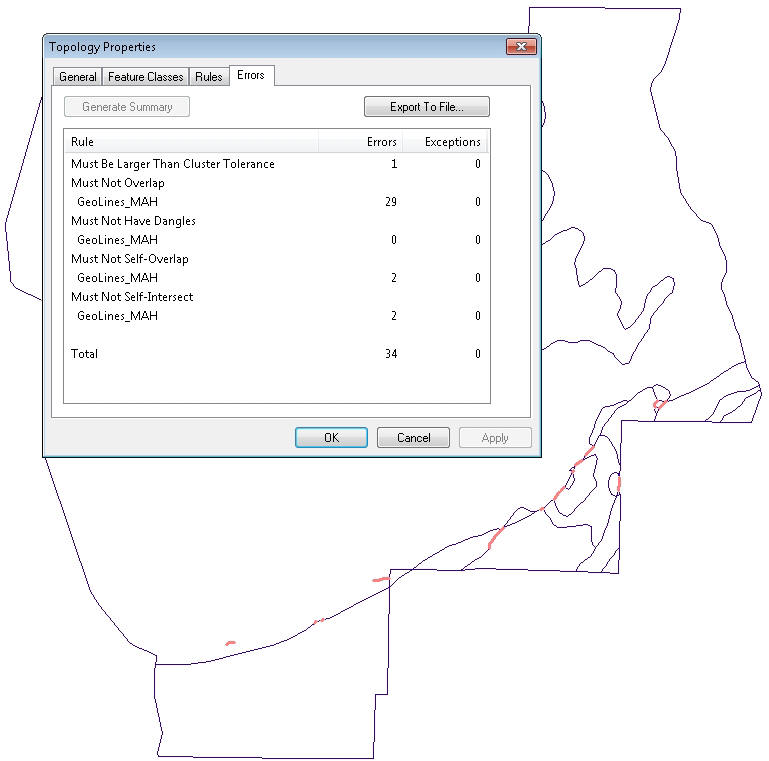
Figure 10. GeoLinesXXX feature class with 34
topology errors, highlighted in pink, as
summarized in the topology error table.
End of Digitizing Part 1 (Lab 4)
In Part II of this Lab (Lab 5, next
week) we will go through and
fix the errors before going on to make
rock unit polygons, attribute them, and complete the map.
|
|